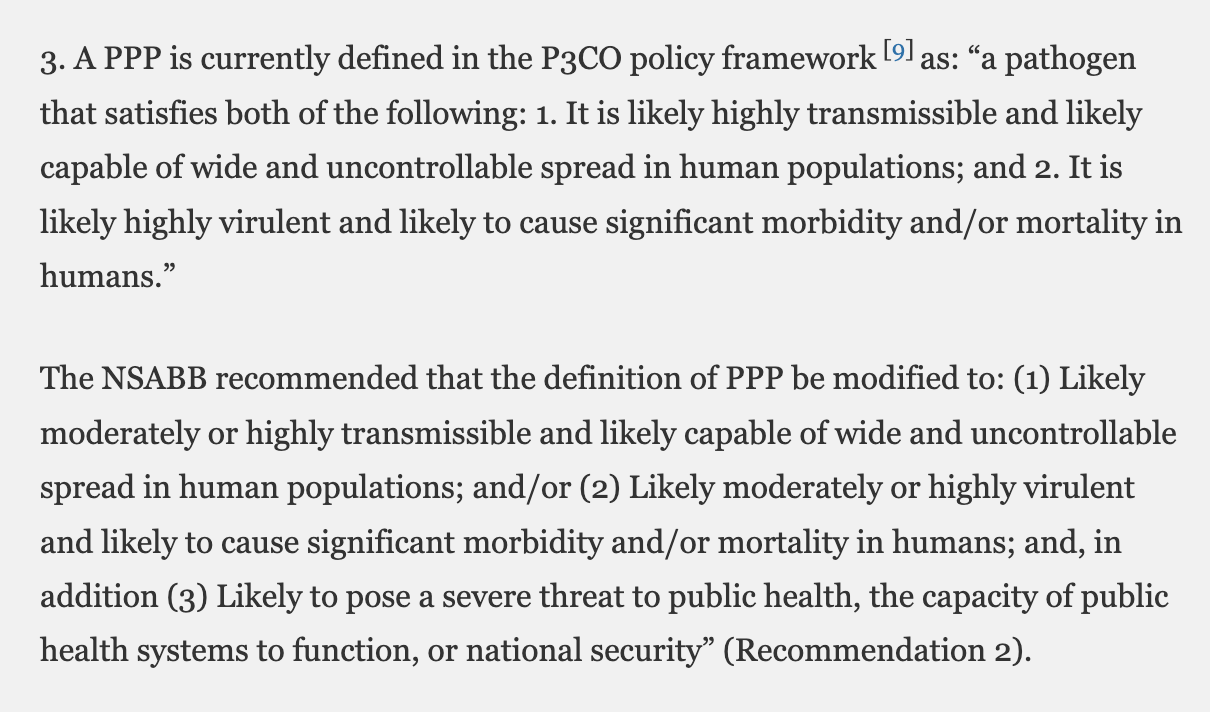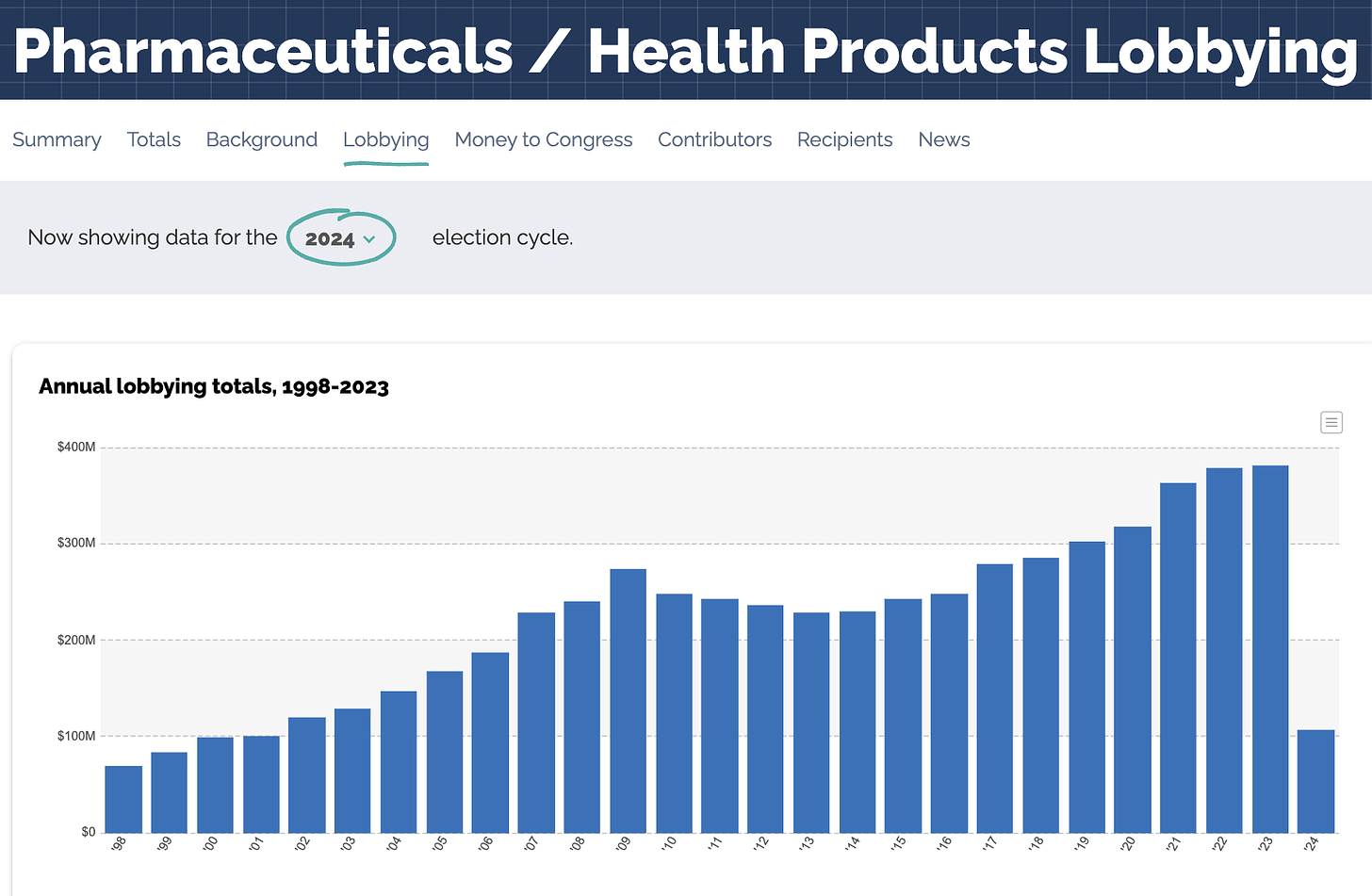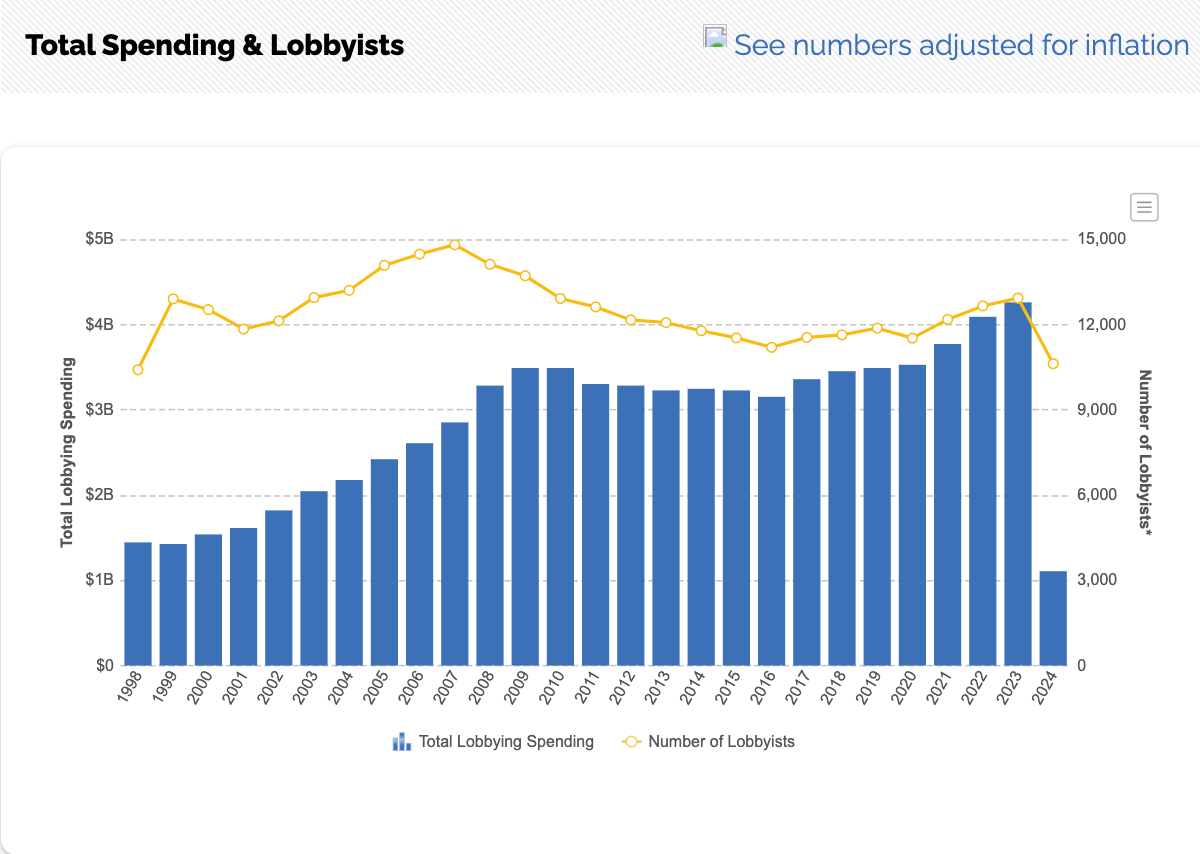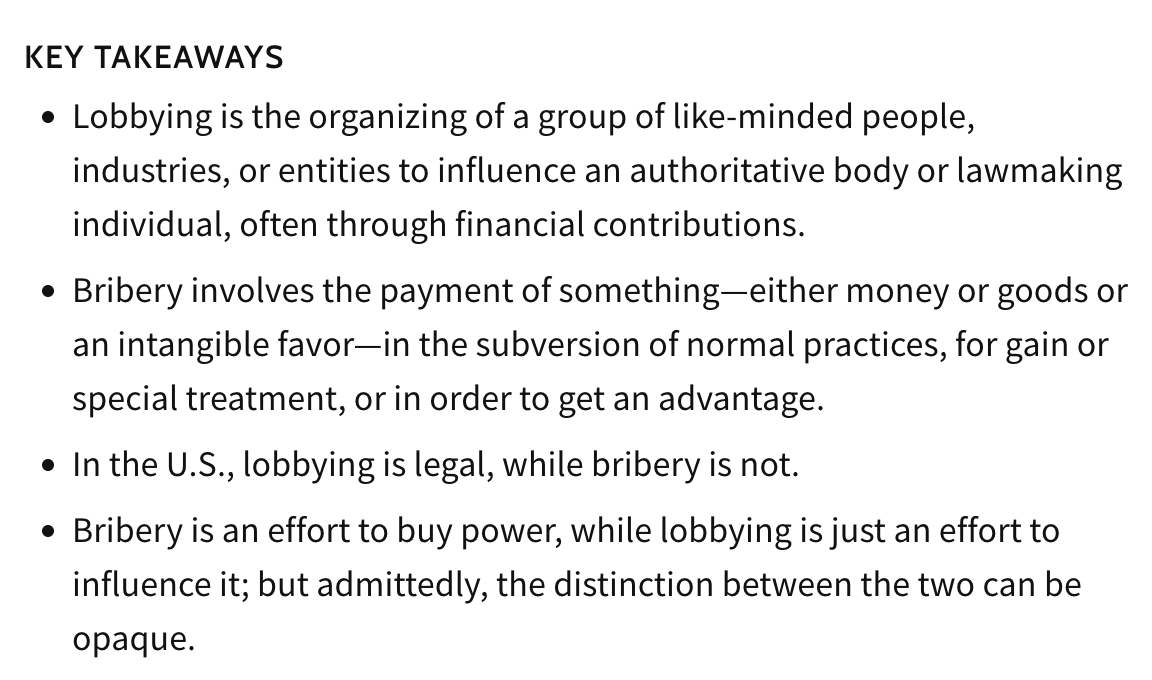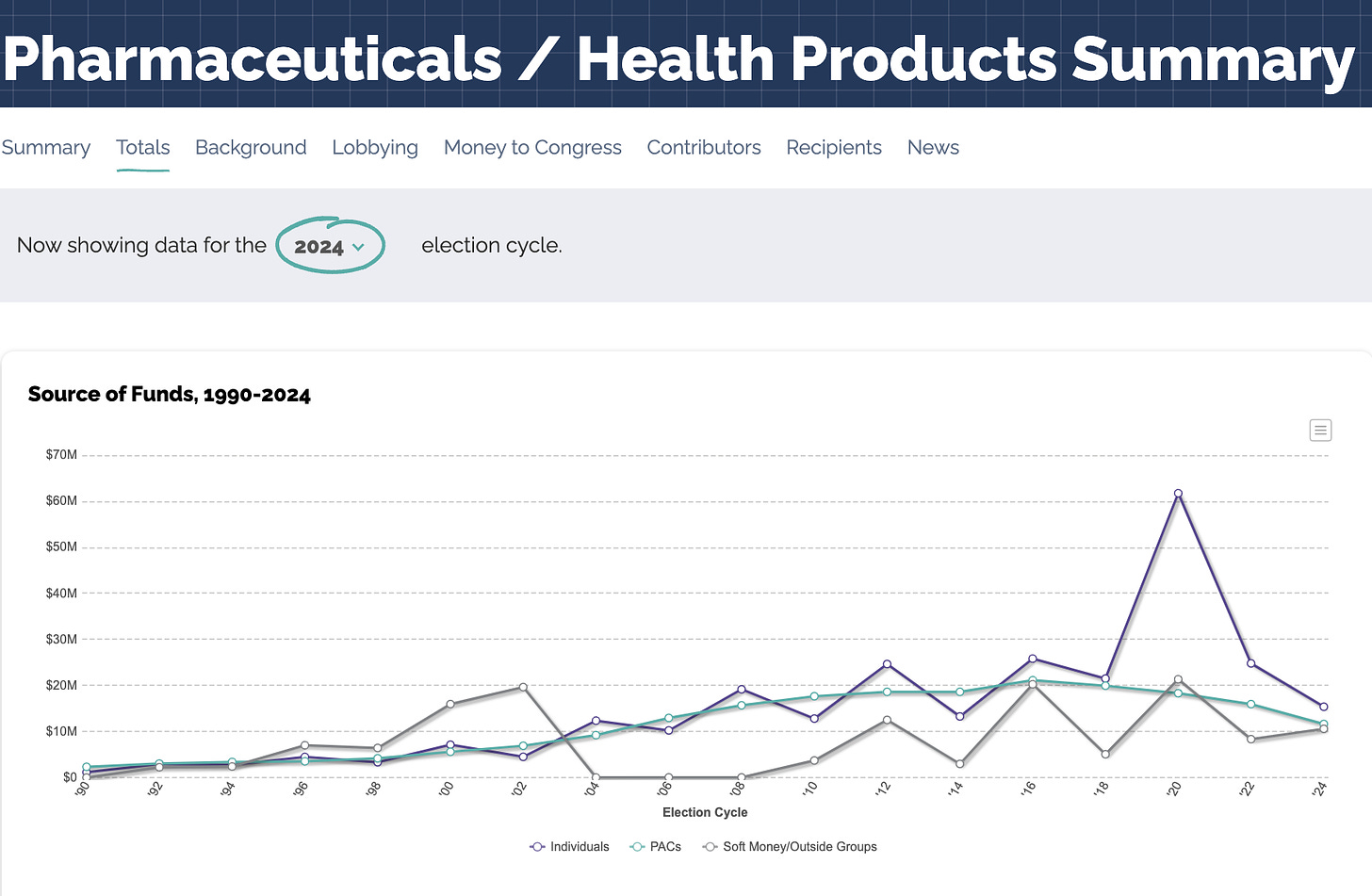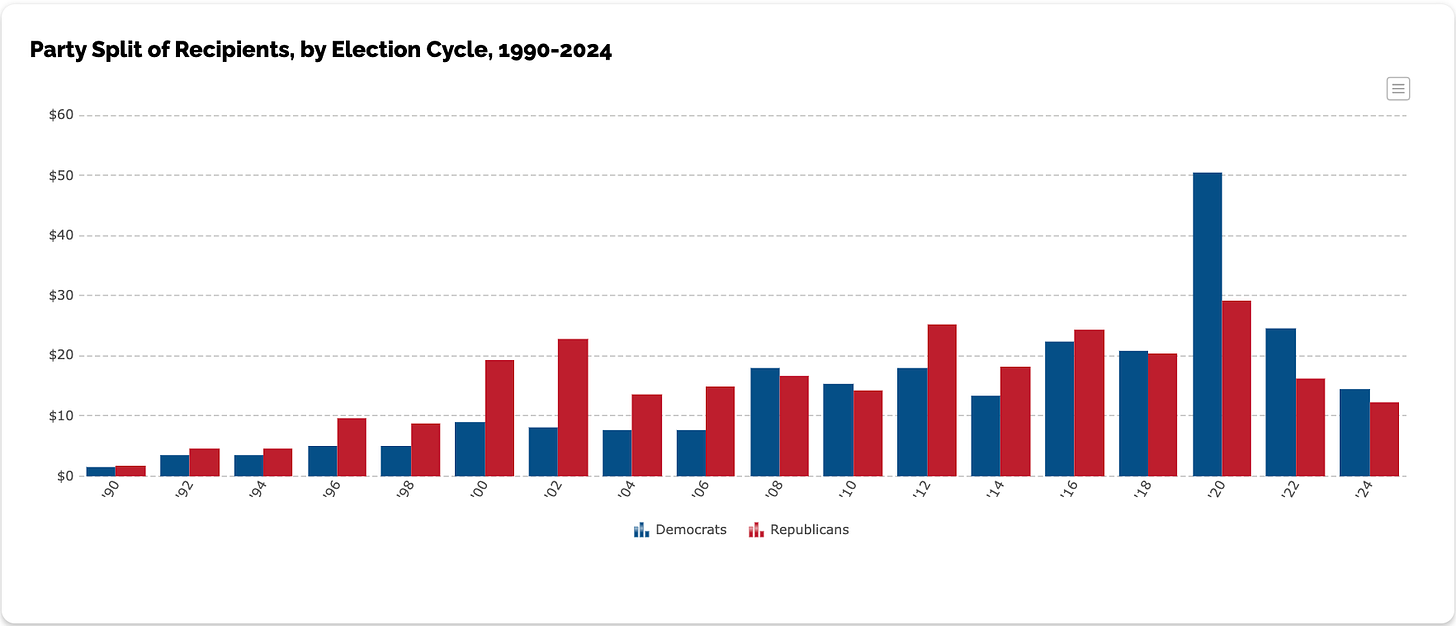New Policy on Risks of Dodgy Biology Research Misses the Mark (again)
"The future is already here; it's just unevenly distributed."
May 13, 2024In response to the continued warnings that the US policies regarding high-risk biological research are too lax, US officials have released a new set of regulations governing how federal funding agencies and research institutions must review and oversee biological experiments that could potentially be misused or cause a pandemic. These regulations do not appear to be available to the public, although the requests for suggestions to 2023 draft regulations can be found here. The new policy will apply to all federally funded research and will take effect in May 2025.
According to the journal Nature, this policy aims to broaden oversight of risky biological experiments, with special attention given to work involving high-risk pathogens. The US National Science Advisory Board for Biosecurity (NSABB) evidently deliberated four years to develop this new policy, but it still does not address some of the most troubling issues regarding gain-of-function research.
Although we aren’t given the final policy implementation, the draft document suggests that the changes being made are not significant. An example from the draft below illustrates the point:
Read the recommended changes. Note that Dr. Peter Dazack, in his testimony to Congress last week, tried to wriggle out of the fact that he was directing gain-of-function research at WIV. His excuse was that the SARS-CoV virus they were humanizing was a mouse variant and, so therefore, excluded. The above passage does nothing to stop his research and other gain-of-function from continuing, as animal viruses are excluded.
It is offensive that phrases gain-of-function and dual-use research are not used in the entirety of the document. It seems as though they don’t have to come to terms with the damage done by the release of SARS-CoV-2 - by omitting these terms. This was caused by their ill-fated recommendation to lift the moratorium on gain-of-function research. Note that PPP means “Potential Pandemic Pathogen”.
By not using the phrases gain-of-function and dual-use research, the committee seems to be obfuscating the fact that this research is still being allowed.
By not using the phrases gain-of-function and dual-use research, the policy is unclear and not transparent. A researcher could easily think that gain-of-function research was actually excluded from these new policy changes, as the term is not used.
Note the word usage of “likely” - so if the researcher deems his or her work as unlikely, then the new policy doesn’t apply. This is just one example, but the truth is that the whole document is clear as mud.
This policy will not prevent risky biological research—it's like a leaky colander. For instance, the research and the institution doing the research get to decide if the research is likely to fall under this guidance. Conflict of interest issues abound.
It's imperative to understand that we need not merely a policy change but rather a complete ban on gain-of-function and risky biological research in the United States, similar to the one in place from 2014 to 2017. This moratorium halted new grants for gain-of-function research involving flu, Middle East respiratory syndrome (MERS), and severe acute respiratory syndrome (SARS). Had this moratorium not been lifted, the SARS-CoV-2 virus, the cause of the current pandemic, would never have been created.
The government ended the moratorium in 2017, after the US National Science Advisory Board for Biosecurity (NSABB), a panel of experts that advises the US government, concluded that very few experiments posed a risk.
Had this moratorium not been lifted, the SARS-CoV-2 virus, the cause of the current pandemic, would never have been created. Why have no federal agencies investigated that decision, which led to the funding of WIV and the creation of SARS-CoV-2?
Furthermore, why was the US National Science Advisory Board for Biosecurity (NSABB), which allowed the gain-of-function moratorium to be lifted in the first place, the very same committee tasked to again write federal policy regarding gain-of-function oversight? Who is watching the “watch-dogs”?
One of the most concerning aspects of the new policy is its failure to extend to non-governmental organizations and the private sector. This means that the commercial sector can continue to gain-of-function work without restrictions. This fact demands immediate attention from Congress, and comprehensive regulations must be considered immediately.
Republican lawmakers are still trying to pass legislation that would once again ban all federally funded gain-of-function research. The legislation has passed in the House, but so far, efforts to create a companion bill have been blocked by the Senate. Unfortunately, neither bill stops gain-of-function research entirely in the USA; it only stops this dangerous research from being funded by the federal government. This is not near enough.
It is unclear why the proposed legislation only covers federally funded research. However, one can speculate that it is due to big pharma's regulatory capture of Congress. After all, who else would benefit from corporations being excluded from a ban on such research? Certainly not the American people!
Open Secrets documents that Congress is receiving enormous amounts of money in lobbying and campaign contributions. In 2023 alone, the pharmaceutical/health products industry spent 382 million on lobbying. According to Politico, pharma lobbying dollars are increasing in 2024.
In 2023, companies spent over 4 billion in lobbying Congress.
How is lobbying different than say, bribery?
However, lobbying is not the financing of campaigns. Campaign finance involves raising and spending money to influence voters in elections, while lobbying involves attempting to influence legislators and government officials on specific legislation or policies.
The pharma/health products industry spent almost 50 million on campaign contributions in 2023 alone.
Yeh, that money goes to both political parties.
Bringing this back around to the new policy on gain-of-function research.
Until Congress is willing to forgo lobbying and campaign finance dollars, we are in danger. It is imperative that Congress pass legislation to stop risky biological research. Otherwise, it will continue unabated. This also includes transhumanism experiments, such as brain chips and computer-enhanced and genetic modifications to warriors for battle.
‘The future is already here; it is just unevenly distributed.”
- Forums
- Breaking News
- COVID AND THE VACCINE - TRUTH, LIES, AND MISCONCEPTIONS REVEALED
New Policy on Risks of Dodgy Biology Research Misses the Mark...
- There are more pages in this discussion • 582 more messages in this thread...
You’re viewing a single post only. To view the entire thread just sign in or Join Now (FREE)
Featured News
Featured News
The Watchlist
AHK
ARK MINES LIMITED
Ben Emery, Executive Director
Ben Emery
Executive Director
Previous Video
Next Video
SPONSORED BY The Market Online


